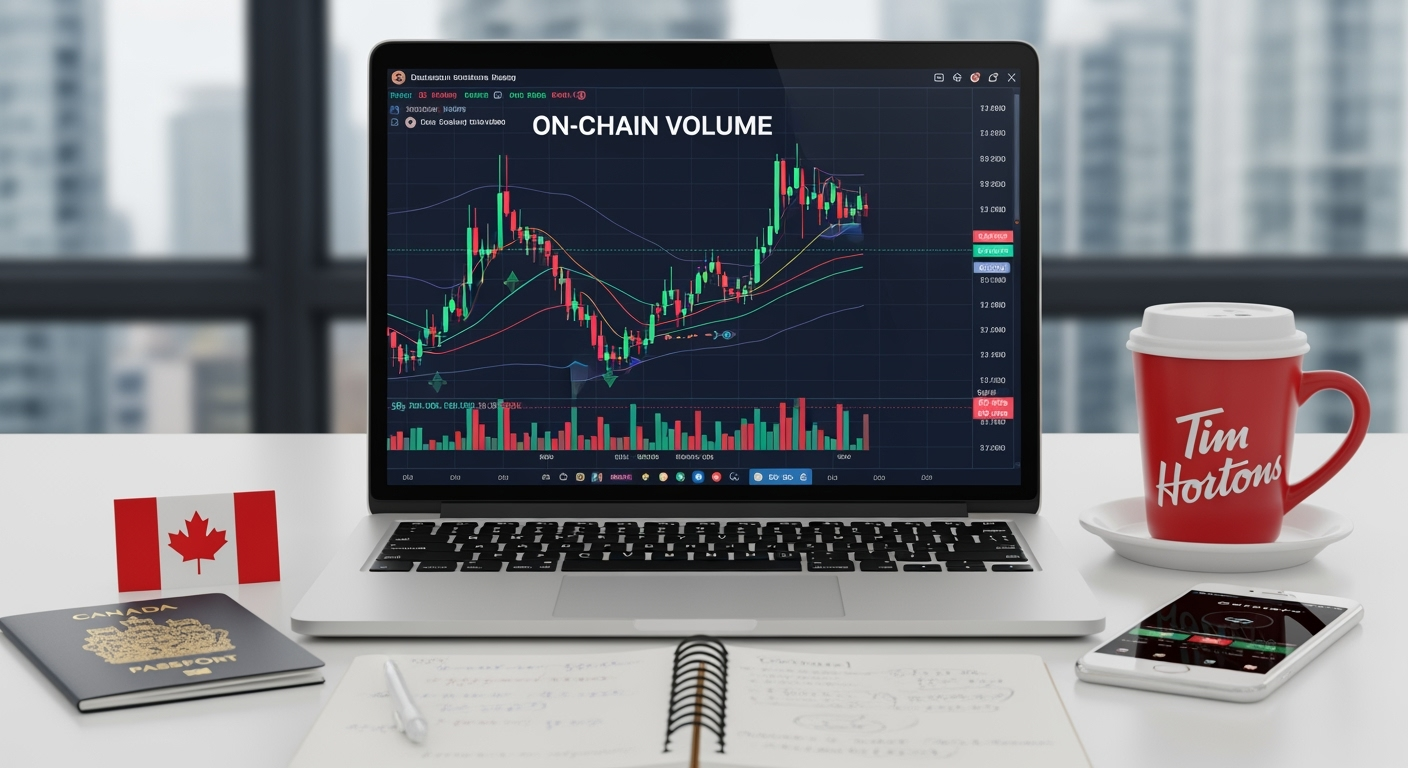On‑chain volume is one of the most overlooked yet powerful indicators for short‑term traders. Unlike traditional price‑based signals, on‑chain volume reflects the real activity behind every transaction, offering a window into market sentiment, liquidity, and potential price direction. Canadian traders—whether using Bitbuy, Wealthsimple Crypto, or international exchanges—can leverage this data to refine entry and exit points, reduce slippage, and enhance risk management. In this guide, we’ll break down the key volume metrics, demonstrate how to interpret them, and walk through a step‑by‑step swing‑trading strategy that applies to both local and global markets.
1. Why On‑Chain Volume Matters
Volume is the lifeblood of any market. In the crypto space, the on‑chain ledger provides a transparent record of every transfer, allowing traders to observe:
- True liquidity: How many real holders are actively moving funds?
- Market participation: Are new or seasoned investors driving trades?
- Sentiment shifts: Sudden volume spikes often precede price moves.
- Arbitrage opportunities: Volume disparities across chains can indicate mispricing.
Because exchanges sometimes manipulate order books, on‑chain volume offers an unfiltered alternative that is harder to fake.
2. Core On‑Chain Volume Metrics
a) Total Token Transfer Volume
This metric counts every token transfer over a period, generally expressed in number of tokens or fiat equivalent. It shows how much activity a coin experiences independent of price.
b) Daily Active Addresses (DAA)
Addresses that initiate at least one transaction in a day. A growing DAA often signals broader adoption and price support.
c) Whale Activity (Large‑Block Transfers)
Large transactions (over 10,000 $USD for most coins) can signal institutional intent or large‑scale repositioning.
d) Volume‑Weighted Average Price (VWAP) on‑Chain
Calculating the average price at which tokens were moved provides insight into where the “real” buying pressure lies.
3. Interpreting On‑Chain Volume Data
To use volume effectively, combine it with price action. A classic pattern is:
- Price makes a new low.
- On‑chain volume surges above the 7‑day moving average.
- VWAP begins to trend upward, indicating buyers stepping in.
When these signals align, a swing trader can treat the low as a potential entry point.
4. Using Volume Indicators for Swing‑Trading Entry & Exit
Step 1: Set a Volume Threshold
Choose a threshold based on historical data. For Bitcoin, a “high” volume might be 200 million $USD per day; for smaller altcoins, adjust accordingly.
Step 2: Combine with Technical Signals
Layer on a simple moving average crossover:
- 50‑period SMA downward break.
- On‑chain volume rises above the 10‑period SMA of volume.
The concurrence suggests a bullish or bearish reversal.
Step 3: Plan the Exit
Set a profit target when on‑chain volume starts to flatten or drops below the 5‑period SMA. Use a trailing stop that follows the VWAP line to protect gains.
5. Canadian Regulatory & Tax Context
While on‑chain data is public, Canadian traders must still report capital gains on the CRA’s return. Automated volume‑based signals can generate frequent trades; keep a detailed log of each position’s entry, exit, and realized PnL. FINTRAC compliance is also crucial if you’re converting large amounts to fiat—ensure your exchange (e.g., Bitbuy or Wealthsimple Crypto) follows proper KYC procedures.
6. Practical Tool Stack
Below are a few free or low‑cost options that pull on‑chain volume data into a trading workflow:
- Glassnode & IntoTheBlock (API key required).
- On‑Chain Metrics dashboards on Coin Metrics.
- Python notebooks using Web3.py to pull transaction logs directly.
Most platforms offer CSV exports, which you can import into TradingView to overlay on price charts without refactoring your existing workflow.
7. Risk Management Specific to Volume Trading
Volume‑based entries can misfire if:
- High volume is caused by “whale dumping” rather than genuine demand.
- Network congestion inflates transaction counts temporarily.
- Chain upgrades or forks create artificial spikes.
Mitigate by:
- Cross‑checking volume on at least two chains that support the token.
- Setting a minimum price trend length (e.g., at least 3 candlesticks) before consuming volume signals.
- Including a volatility filter like ATR to avoid entering when the market is erratic.
8. Case Study: Applying Volume to Bitcoin Swing Trade
For illustration, consider BTC on a 4‑hour chart. On 14 June a normal downtrend turns into a sharp pullback. The on‑chain volume spikes from 85 million $USD to 210 million $USD—double the daily average. VWAP moves 1.3 % above the previous level. The 50‑period SMA is still below, but the increased volume indicates buyers entering. A trend‑following entry at 28,500 $USD with a 10 % stop‑loss creates an attractive risk‑reward profile. The trade closes at 32,800 $USD when on‑chain volume fades below the 5‑period SMA, locking a 14.8 % gain. During the entire period, the trader logged the trade details for CRA purposes and verified KYC compliance on Bitbuy.
9. Next Steps: Automating Volume Signals
Once comfortable with manual interpretation, consider writing a simple script that watches on‑chain volume in real time and triggers alerts when predefined thresholds are crossed. A basic ArboNode or Node‑JS script can pull data from Glassnode’s API, apply the SMA filters, and send a notification to your phone. This automation reduces latency, especially useful on 24‑hour markets where a split‑second delay can cost you a slice of profit.
By integrating on‑chain volume into your swing‑trading toolkit, Canadian traders gain a more nuanced view of market dynamics—beyond the surface price candles. The transparency of blockchain data, coupled with rigorous risk controls and compliance, forms a robust foundation for smarter, more disciplined crypto trading.
